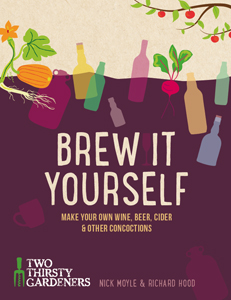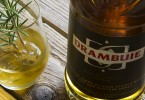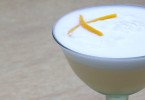There are few alcoholic drinks I make more regularly than sloe gin. Every Christmas a new batch gets sampled before joining the bottles of previous vintages waiting to be steadily consumed throughout the year (it makes a particularly tasty nightcap on a camping trip).
But this year my local sloe bushes have been HACKED DOWN by the council!
Fortunately it doesn’t take too long to find wild sloes and a new walking route soon yielded a bagful of round, purple fruits. Except, on closer inspection, I think there may be a few bullaces in the mix…
Bullaces are like fat sloes. Or, if you prefer, tiny damsons. All three fruit grow in similar wild locations and are easily confused – especially as, like many fruits, their size can vary from one tree to the next. Sloes and bullaces also cross produce with each other, blurring the identification boundaries even further. We are, of course, talking about the dark purple ‘black bullace’. The ‘white bullace’, which comes in shades of yellow or green, is easier to spot. Confused? So are we, but we’ll attempt a proper identification guide another day…
Happily, when it comes to infusing into booze, sloes and bullaces (and their hybrids) will produce similar results. Some folk will insist that a ripe bullace is more likely to have a mellow sweetness closer to a damson, but both fruits exude the fruity, sour flavours that go so well with clear spirits. Gin tends to get the nod as the tipple of choice, but vodka or rum make equally good alternatives.
Our sloe (or bullace) gin (vodka or rum) recipe
For every 70cl bottle of gin you require around 450g of sloes and between 180g to 250g of white sugar, depending on preference for sweetness (start low, give it a taste after a month and add more if required).
Wash the sloes and prick all over with a fork so the flavours can ooze out of their tannin rich skins. If you’re feeling a bit lazy then freezing them will perform a similar task. Combine the three ingredients in a jar and shake every day for a few weeks. Leave for three months, with a few extra shakes administered every once in a while, then strain and bottle. This stuff rocks on for years and genuinely improves with age.
+++++++
For more great recipes…
This recipe features alongside over 75 more great booze recipes in our book, Brew it Yourself. Packed with advice and inspiration for the booze making novice and for those old hands seeking new ideas, we reckon it will liven up anyone’s book shelf. Available now on Amazon.
+++++++










I have my sloe gin on the dresser out of direct light but would it be happier in the dark?
Generally the darker the better as sunlight can affect the drink slightly over time (mainly the colour). However, if it’s out of direct light then I’m sure it’ll be fine – I keep mine on the top of a bookcase which is probably similar conditions to your dresser. And it still gets better the longer I leave it!
Thanks so much as I don’t think I will remember to shake it I if it is hidden in a cupboard!!
I have only clear demijohns, but wanted to keep a good colour in wines – I rescued a pair of old black trousers from the recycling bin, cut off the legs and made 4 covers. Works a treat, keeps the wine dark but is easy to remove to check on the progress of the yeast, sedment etc. Use a clothes peg to keep the looser ones in place. So far we’ve had some lovely bright pink Strawberry, and some delicate rose Pear.
That’s a great idea! Thanks for sharing. I’m already thinking about converting all my black trousers to shorts…!
What pears did you use to make a rosé wine, and how does it taste? I’ve found pears to be the second most unpredictable of all fruits (first prize goes to plums).
We have 3 small pear trees in the garden, all old. The best wine comes from the one which has masses of small pears (and I do mean small.. think average egg size) which are (of course) all ripe on the same day. Otherwise I use all the roughest, spottiest pears that no-one wants to eat. I try to remove the wasps first but otherwise it all gets chopped up.It tastes great .. gentle and zingy.